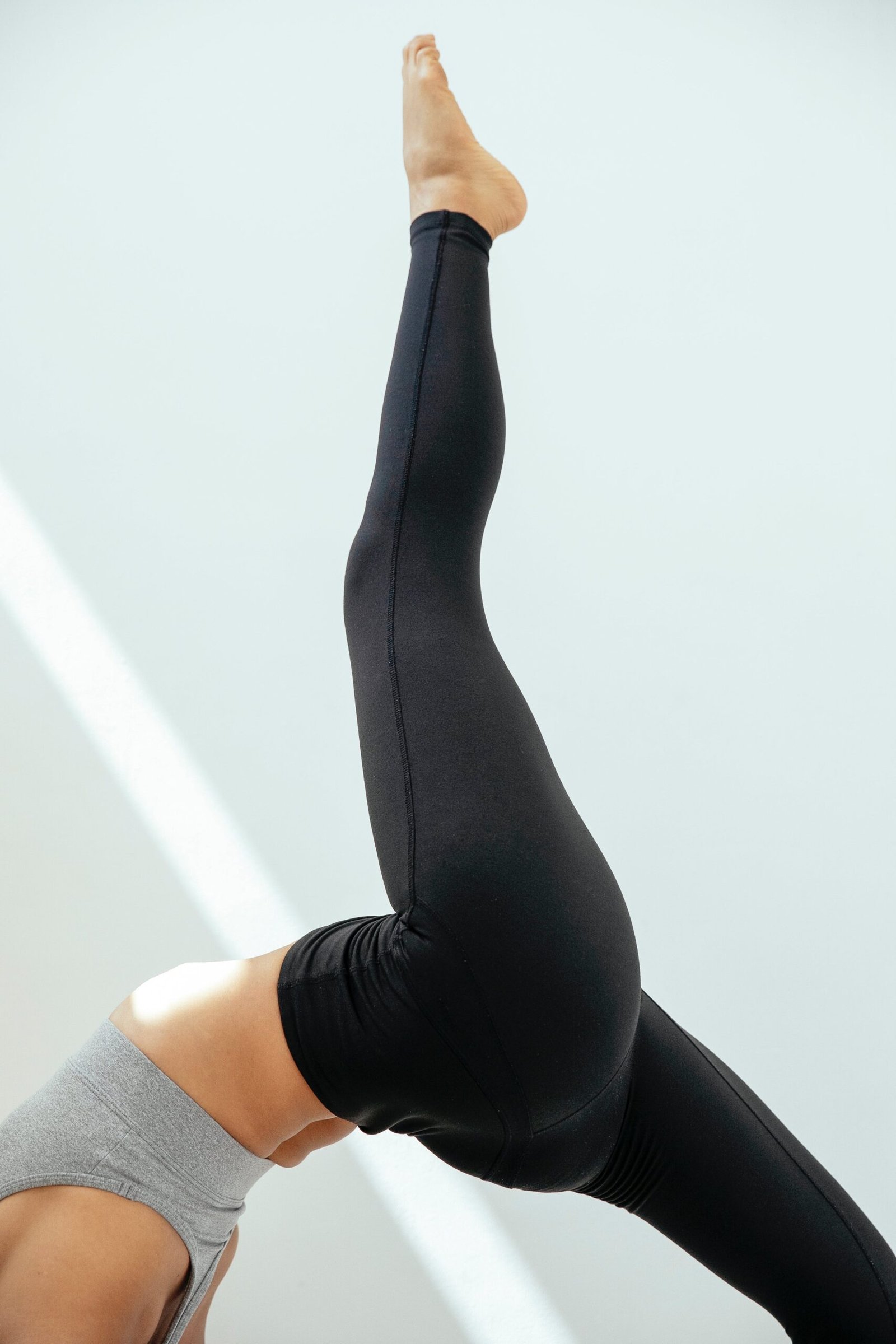
Are you tired of waking up with nagging shoulder and elbow pain every morning? Look no further! In this article, we will share some simple yet effective tips on how to relieve shoulder and elbow pain caused by sleeping. Whether you suffer from stiffness, soreness, or even numbness, these practical solutions will help you wake up feeling refreshed and pain-free. Say goodbye to restless nights and hello to a good night’s sleep!

Causes of Shoulder and Elbow Pain from Sleeping
Sleeping Position
The way you sleep can greatly impact your shoulder and elbow health. Sleeping on your side with your arm positioned under your head or pillow can put excessive pressure on your shoulder joint and compress the nerves and blood vessels in your elbow. This can lead to pain and discomfort upon waking up. Similarly, sleeping on your stomach can cause strain on your shoulder and elbow joints, as well as your neck and spine.
Poor Pillow Choice
Choosing the wrong pillow can also contribute to shoulder and elbow pain while sleeping. A pillow that is too flat or too thick can misalign your neck and shoulders, causing strain on the surrounding muscles and joints. It is important to find a pillow that provides adequate support and keeps your head, neck, and spine aligned in a neutral position.
Wrong Mattress
Sleeping on a mattress that does not provide proper support can worsen shoulder and elbow pain. A mattress that is too soft can cause your body to sink, leading to poor alignment and putting strain on your joints. On the other hand, a mattress that is too firm can lack necessary cushioning, leading to added pressure on your shoulders and elbows. It is crucial to find a mattress that strikes a balance between support and comfort for optimal sleep posture.
Inadequate Support
Lack of proper support during sleep can contribute to shoulder and elbow pain. This can occur when your body does not have sufficient support to maintain proper alignment and relieve pressure points. Insufficient support can be caused by a worn-out mattress, old pillows, or sleeping on a surface that fails to conform to your body’s contours. Without adequate support, your shoulders and elbows may be subjected to unnecessary strain and discomfort.
Preventive Measures to Reduce Shoulder and Elbow Pain
Correct Sleeping Position
To alleviate shoulder and elbow pain from sleeping, it is important to adopt the correct sleeping position. The recommended position is to sleep on your back with a pillow that supports your head, neck, and shoulders in proper alignment. This position helps to distribute your body weight evenly, reducing pressure on your shoulders and elbows. Alternatively, if you prefer to sleep on your side, use a firm pillow that keeps your spine aligned and place a pillow between your knees to further reduce stress on your joints.
Choosing the Right Pillow
Selecting the right pillow is essential for preventing shoulder and elbow pain during sleep. Look for a pillow that provides adequate support and conforms to the natural curves of your head and neck. Memory foam pillows are often recommended as they contour to your body’s shape, providing optimal support and pressure relief. Additionally, consider using a pillow designed specifically for shoulder and neck support, as these can help alleviate pain and discomfort.
Optimal Mattress Selection
Investing in an appropriate mattress can go a long way in reducing shoulder and elbow pain from sleeping. Look for a mattress that provides both support and comfort. Memory foam or latex mattresses are often recommended as they offer excellent support and conform to your body’s contours. Additionally, consider a mattress with zoning technology that provides different levels of support for different body parts, including your shoulders and elbows.
Use of Supportive Aids
If you experience persistent shoulder and elbow pain while sleeping, using supportive aids can help alleviate discomfort. Consider using a shoulder pillow to provide added support and reduce pressure on your joint. Alternatively, using a body pillow can help maintain proper spinal alignment and reduce strain on your shoulders and elbows. Experiment with different aids to find what works best for you and provides the necessary support for pain-free sleep.

Exercises to Relieve Shoulder and Elbow Pain
Shoulder Rolls
Shoulder rolls are an effective exercise for relieving tension and pain in the shoulders and elbows. Start by sitting or standing with your arms relaxed at your sides. Slowly roll your shoulders forward, then pull them back in a circular motion. Repeat this exercise for about 10-15 times, then switch directions and perform the same number of repetitions. This exercise helps improve blood circulation, relieves muscle tension, and increases flexibility in the shoulder and elbow joints.
Wall Push-ups
Wall push-ups are a gentle exercise that helps strengthen the muscles in your shoulders, arms, and chest while minimizing stress on your joints. Stand arm’s length away from a wall, place your hands flat against the wall at shoulder height, and step back slightly. Keep your body straight as you bend your elbows and lower your chest towards the wall. Push back up to the starting position. Aim for 2-3 sets of 10-15 repetitions. Wall push-ups improve muscle strength and endurance, reducing the likelihood of shoulder and elbow pain.
Tricep Stretches
Tricep stretches can help alleviate pain and tension in the back of the upper arms and elbows. Start by standing straight with your feet shoulder-width apart. Extend one arm overhead and bend it at the elbow, reaching your hand towards the opposite shoulder blade. Use your other hand to gently pull the bent arm closer to your head, feeling a stretch in the tricep muscle. Hold this stretch for 20-30 seconds, then repeat on the opposite side. Perform this stretch 2-3 times on each arm.
Cross-Body Arm Stretch
Cross-body arm stretches target the muscles in your shoulders and upper back, providing relief from pain and tightness. Stand or sit up straight and bring one arm across your chest, using your other hand to gently pull the arm closer to your body. Hold the stretch for 20-30 seconds, feeling a gentle pull in your shoulder and upper back. Repeat on the opposite side. Perform this stretch 2-3 times on each arm to improve flexibility and reduce tension in the shoulder and elbow area.
Doorway Stretch
The doorway stretch targets the muscles in your chest, shoulders, and upper back. Stand in a doorway and place your forearms on each side of the door frame, elbows bent at a 90-degree angle. Gently lean forward, feeling a stretch in your chest and shoulders. Hold the stretch for 20-30 seconds, then release. Repeat this stretch 2-3 times to alleviate pain and tension in your shoulders and elbows.
Tabletop Shoulder Blade Squeeze
The tabletop shoulder blade squeeze exercise helps improve posture and alleviate pain in the shoulder and upper back area. Sit or stand with your arms relaxed at your sides. Imagine squeezing a pencil between your shoulder blades as you draw them together. Hold this squeeze for 5-10 seconds, then release. Repeat the exercise for 10-15 times to strengthen your shoulder and back muscles, improving stability and reducing pain.
Applying Heat or Cold Therapy
Heat Therapy
Applying heat to your shoulders and elbows can help relax muscles, increase blood flow, and alleviate pain. You can use a heating pad, warm towel, or hot water bottle wrapped in a towel. Apply the heat source to the affected areas for 15-20 minutes. Make sure the temperature is comfortable and avoid applying heat directly to the skin. Heat therapy can be particularly beneficial before bedtime to help relax the muscles and promote a good night’s sleep.
Cold Therapy
Cold therapy can reduce inflammation, numb pain, and provide temporary relief for shoulder and elbow pain. Wrap an ice pack or a bag of frozen vegetables in a thin cloth and apply it to the affected areas for 10-15 minutes. It is important to avoid applying ice directly to the skin to prevent frostbite. Cold therapy can be especially helpful immediately after experiencing pain or during periods of increased inflammation.

Over-the-Counter Pain Relief Options
Nonsteroidal Anti-inflammatory Drugs (NSAIDs)
Over-the-counter NSAIDs such as ibuprofen and naproxen sodium can provide temporary relief from shoulder and elbow pain. These medications help reduce inflammation and alleviate pain. It is important to follow the recommended dosage and consult with a healthcare professional if the pain persists or worsens.
Topical Analgesics
Topical analgesics, such as creams, gels, or patches, can provide localized pain relief for shoulder and elbow pain. These products often contain ingredients like menthol or capsaicin that help soothe the affected area and alleviate discomfort. Follow the instructions provided with the product and consult with a healthcare professional if you experience any allergic reactions or irritation.
When to Seek Medical Advice
Persisting or Worsening Pain
If your shoulder and elbow pain persists or worsens despite trying preventive measures and home remedies, it is advisable to seek medical advice. A healthcare professional can assess the underlying cause of the pain and recommend appropriate treatment options.
Loss of Function or Range of Motion
If you experience a loss of function or range of motion in your shoulder or elbow joint, it may indicate a more serious underlying issue. Consulting a healthcare professional is crucial to determine the cause and develop an appropriate treatment plan.
Weakness or Numbness
If you experience weakness or numbness in your shoulder or arm along with pain, it could be a sign of nerve compression or injury. Seeking medical advice is important to rule out any serious conditions and receive appropriate treatment.
Signs of Infection or Inflammation
If you notice any signs of infection, such as redness, swelling, warmth, or fever, or if your shoulder or elbow joint appears inflamed, it is important to seek medical attention. These symptoms may indicate an infection or inflammation that requires medical treatment.
Managing Shoulder and Elbow Pain during Sleep
Change Sleeping Positions
If you experience shoulder and elbow pain while sleeping, changing your sleeping position can make a significant difference. Experiment with different positions and pillows to find the most comfortable and supportive arrangement for your joints. As mentioned earlier, sleeping on your back with proper support is often recommended to minimize pressure on your shoulders and elbows. If you prefer to sleep on your side, make sure to use a firm pillow and place a pillow between your knees to maintain proper alignment.
Use of Additional Pillows or Supports
Using additional pillows or supports can help reduce shoulder and elbow pain. Placing a pillow under your arm while sleeping on your side can provide additional support and alleviate pressure on your shoulder joint. You can also use a pillow to prop up your arm while sleeping on your back, keeping your elbow slightly bent to reduce strain. Experiment with different pillow placements and supports to find what works best for your individual needs.
Relaxation Techniques
Incorporating relaxation techniques before bed can help relax the muscles and reduce shoulder and elbow pain. Engaging in activities such as deep breathing exercises, meditation, or gentle stretching can help release tension and promote relaxation. Establishing a bedtime routine that includes these techniques can improve sleep quality and minimize discomfort.
Improving Sleep Environment
Bedroom Temperature
Maintaining a comfortable bedroom temperature can contribute to better sleep and reduced shoulder and elbow pain. Keep your bedroom cool and well-ventilated to promote comfortable sleep. Experiment with different temperature settings to find what works best for you.
Room Darkening
Creating a dark and quiet sleep environment can help improve sleep quality and reduce pain. Use blackout curtains or blinds to block out excess light, and consider using earplugs or a white noise machine to minimize disruptive noises during the night.
Reducing Noise
Excessive noise can disrupt sleep and increase muscle tension, worsening shoulder and elbow pain. Take steps to reduce noise in your bedroom, such as closing windows, using earplugs, or using a white noise machine to mask unwanted sounds.
Creating a Relaxing Atmosphere
Creating a calming and relaxing atmosphere in your bedroom can promote restful sleep and alleviate shoulder and elbow pain. Keep your bedroom clutter-free and use soft lighting or aromatherapy to create a soothing ambiance. Use comfortable bedding and ensure your mattress and pillows provide adequate support.
Importance of Regular Exercise and Stretching
Strengthening Muscles
Regular exercise and strength training can help prevent and reduce shoulder and elbow pain. Strengthening the muscles around your shoulders and elbows helps improve stability and support for these joints. Incorporate exercises that target the specific muscles in your upper body, such as bicep curls, tricep dips, and shoulder presses.
Enhancing Flexibility
Maintaining good flexibility in your shoulder and elbow joints can help prevent pain and improve overall joint function. Incorporate regular stretching exercises, such as arm circles, shoulder shrugs, and wrist flexion and extension, into your daily routine.
Improving Joint Stability
Exercises that improve joint stability can help reduce the risk of injury and pain in your shoulders and elbows. Include exercises that focus on improving balance and coordination, such as yoga or Pilates. These exercises help strengthen the supporting muscles and ligaments around the joints, providing better stability.
Taking Breaks and Position Modification during the Day
Avoiding Prolonged Repetitive Movements
Engaging in repetitive motions for extended periods can contribute to shoulder and elbow pain. Take regular breaks and vary your movements to avoid overuse and strain on these joints. If your work or daily activities involve repetitive motions, make sure to incorporate frequent breaks and stretch your muscles to reduce the risk of pain and discomfort.
Ergonomic Desk Setup
An ergonomic desk setup is essential for preventing shoulder and elbow pain during the day. Ensure that your desk, chair, and computer are positioned ergonomically to promote proper posture and reduce strain on your joints. Adjust your chair height, desk height, and monitor position to maintain a neutral position for your shoulders and elbows.
Using Proper Lifting Techniques
Using proper lifting techniques is crucial for preventing shoulder and elbow injuries. When lifting heavy objects, remember to lift with your legs, not your back or arms, and avoid twisting or jerking motions. Distribute the weight evenly and use assistive tools or ask for help when needed to reduce the strain on your shoulders and elbows.
By following these preventive measures, incorporating exercises, and considering strategies to improve your sleep environment, you can reduce the likelihood of experiencing shoulder and elbow pain from sleeping. It is important to listen to your body and seek medical advice if the pain persists or worsens. Remember, a good night’s sleep and proper self-care are essential for maintaining overall health and well-being.





